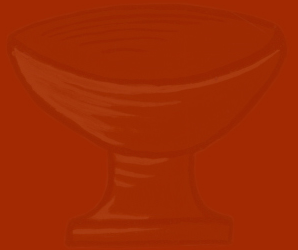
About this icon
This icon describes the solitary and austere life in the desert of John the Baptist. He is seen in his camel's hair shirt holding his staff with a cross that announces both the coming and the death of Christ. John the Baptist was a preacher and here he speaks as "the voice crying out from the wilderness". From the scroll he holds, he asks us to transform ourselves.
About John the Baptist
John the Baptist, was born 5 B.C. in Judea. He was beheaded in c. 33 A.D. and was best known as: The man who "prepared the way" for Jesus Christ.
According to the Gospels, John's role was to announce the coming of Jesus: in John 1:23 he tells interrogators, "I am the voice of one crying out in the wilderness, 'Make straight the way of the Lord.'" According to Matthew 3:4, he wore clothing made of camel's hair and ate locusts and wild honey, and baptized people in the river Jordan. (It was after being baptized by John that Jesus was led to the wilderness to be tempted by the devil.) John later was executed by the ruler Herod; as told in Matthew chapter 14, Herod granted the demand of Salome to "give me the head of John the Baptist here on a platter."
The Eastern Orthodox believe that John was the last of the Old Testament prophets, thus serving as a bridge between that period of revelation and the New Covenant. They also teach that, following his death, John descended into Hades and there once more preached that Jesus the Messiah was coming, so he was the Forerunner of Christ in death as he had been in life. According to Sacred Tradition, John the Baptist appears at the time of death to those who have not heard the Gospel of Christ, and preaches the Good News to them, that all may have the opportunity to be saved.
Orthodox churches will often have an icon of St. John the Baptist in a place of honor on the iconostasis, and he is frequently mentioned during the Divine Services. Every Tuesday throughout the year is dedicated to his memory.
There are six separate feast days:
September 23
Conception of St. John the Forerunner
January 7
The Synaxis of St. John the Forerunner. This is his main feast day, immediately after Theophany on January 6 (January 7 also commemorates the transfer of the relic of the right hand of John the Baptist from Antioch to Constantinople in 956)
February 24
First and Second Finding of the Head of St. John the Forerunner
May 25
Third Finding of the Head of St. John the Forerunner
June 24
Nativity of St. John the Forerunner
August 29
The Beheading of St. John the Forerunner




